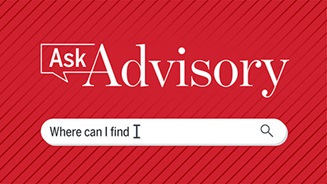Research has found that teams where people feel safe disagreeing with each other perform better than other teams and make better decisions. Writing for the Harvard Business Review, Amy Gallo provides four tips on how to encourage the right kind of conflict on your team.
4 ways to encourage the right kind of conflict on your team
1. Tell your team it's okay
Start off by telling your team that disagreements are not only normal, but are an expected and productive part of collaboration, teamwork, and innovation, Gallo writes. There's often a human tendency to avoid conflict, so it's important you are explicit in saying you expect people to disagree, and that disagreement isn't a problem, but rather an opportunity.
You can also set norms for how you expect people to interact, especially when they disagree. Gallo recommends saying things like "we communicate openly and say what we mean and mean what we say," making it clear that disagreements are opportunities for growth instead of personal attacks.
Another option is "we focus on the issues," meaning that everyone focuses on the problems that need to be solved and not the personalities involved. Gallo also recommends "we respect different perspectives," making it clear that even in disagreement, the team should respect everyone's point of view.
2. Call out positive tensions
To ensure that disagreements are depersonalized and that health conflicts are normalized, it can be helpful to acknowledge and even list tensions that come up, Gallo writes.
For example, often teams disagree over speed versus quality, where one person may be incredibly efficient and focused on hitting deadlines and feel strongly that moving quickly is critical. Meanwhile, there could be another team member who thinks that speed is overrated and that slowing down and ensuring you're producing quality work is more important.
It's likely these two people will be in conflict, but this is a good tension to have, Gallo writes, provided that both parties can navigate that conflict professionally and productively, which will likely then lead to work being done faster and with higher quality. However, it's important to ensure this tension doesn't turn into an interpersonal conflict where one person is painted as careless and hasty and the other is slow and obstructive, Gallo writes.
Gallo recommends taking time to think about the tensions that come up most frequently on your team and writing them down so you can easily call them out when they arise. You should also discuss these positive tensions with your team without assigning them to specific people, and explain why it's good those tensions exist.
RELATED resources
3. Depersonalize the conflicts
Naming the positive tensions on your team is an advantage because you separate the person from the problem, Gallo writes.
Another way to do this is by asking people to argue against their own standpoint, which can help them see another person's perspective and help the rest of the team depersonalize an argument from a person.
Gallo also recommends some questions you can use in a discussion to keep a disagreement healthy like, "is there another angle that we're missing here?" or "what are the pros and cons of perspective A and perspective B?" or "if we were able to remove the constraints we're under, how would this discussion change?"
4. Remain calm
One of the most important things you can do as a leader is to display comfort whenever a conflict arises, Gallo writes.
Whether you like it or not, your perceived power and authority over others on your team means they will look to you for signs of whether something is okay or not. If you appear angry or upset when a disagreement arises, people will often notice and interpret that it's not okay to engage in debate.
However, if you remain calm and model comfort and patience, your team will be willing to engage in and surface disagreements and tensions. For example, Gallo writes that you could calmly say something like "This feels like a tension between speed and quality. Do others see it that way?" If the conversation then moves into unhealthy territory, you can redirect the conversation by saying something like "Let's shift this conversation back to a productive space. What do we need to decide here to help us move toward our goals?"
Tensions on a team "are inevitable and encouraging positive ones can create an environment where people feel safe to voice their opinions and ideas, leading to better decisions and results," Gallo writes. "As a manager, you not only want to tolerate these sorts of disagreements but encourage them."
(Gallo, Harvard Business Review, 2/3)
Don't miss out on the latest Advisory Board insights
Create your free account to access 1 resource, including the latest research and webinars.
Want access without creating an account?
You have 1 free members-only resource remaining this month.
1 free members-only resources remaining
1 free members-only resources remaining
You've reached your limit of free insights
Become a member to access all of Advisory Board's resources, events, and experts
Never miss out on the latest innovative health care content tailored to you.
Benefits include:
You've reached your limit of free insights



